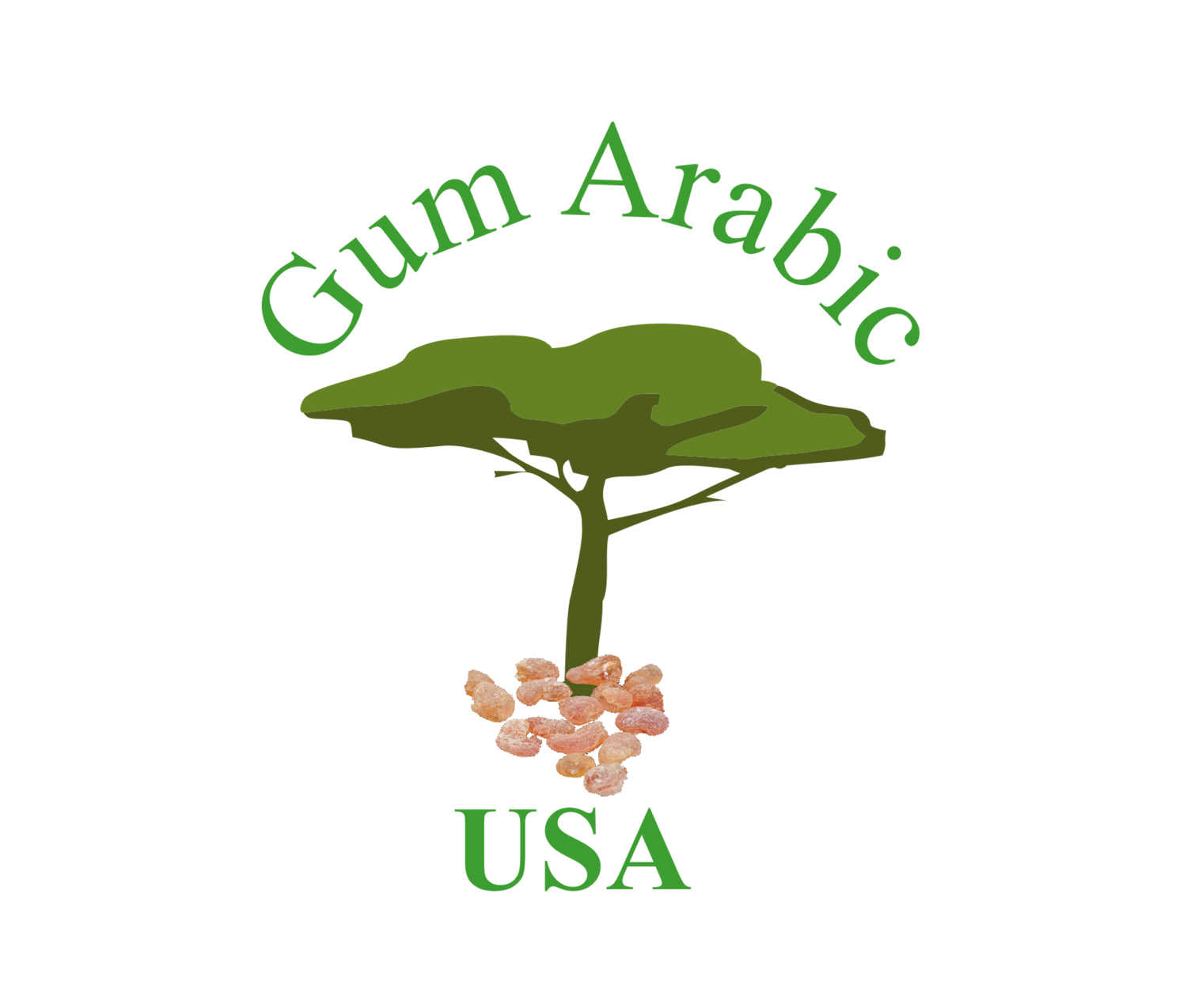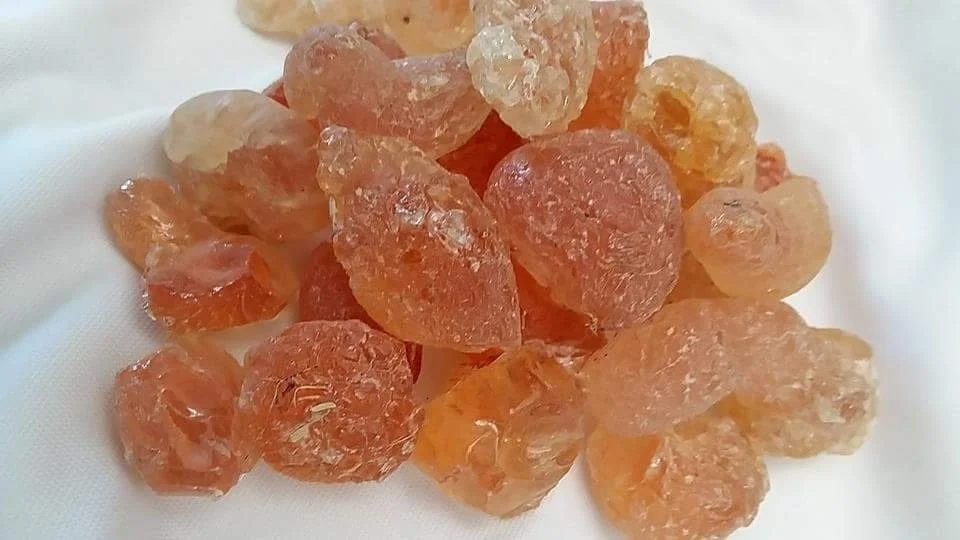Gum Arabic, though now commercially harvested across the African Sahel, remains an essential ingredient in the Middle East, where it has been used for centuries. A notable example is its use in Arab cuisine, where it is transformed into a sweetened, flavored, and chilled gelato-like dessert. This time-honored tradition highlights the versatility and cultural significance of Gum Arabic, which continues to be valued not only for its functional properties but also for its role in food and health.
COMPOSITION
The 31st Codex Committee on Food Additives (March 19-23, 1999, The Hague, Netherlands) officially defines Gum Arabic as the dried exudate from the trunks and branches of Acacia Senegal and Vachellia Seyal of the Leguminosae family. This natural biopolymer, primarily composed of arabinogalactan, is rich in galactose and arabinose monosaccharides, which are essential components of plant gums. Additionally, it contains diferulic acid covalently bound to the arabinogalactan-protein fraction, enhancing its emulsifying and stabilizing properties.
The arabinogalactan is a type of biopolymer that consists of galactose and arabinose monosaccharides. This is a primary component of most plant gums that include gum Arabic. The 8-5' Non cyclic diferulic acid is identified as covalently associated to the carbohydrate moieties of arabinogalactan-protein fraction. Gum Arabic can be used for reducing the surface tension of the liquids that can lead to more amounts of foaming as in the case of carbonated beverages.
APPLICATION AND PRODUCTION
One of Gum Arabic’s most valuable applications is as a Soluble Dietary Fiber and a powerful Natural Prebiotic, making it an unparalleled ingredient for gut health and digestion. Due to its ability to reduce surface tension in liquids, it also plays a key role in carbonated beverages, where it improves foam stability. This property has even made it a vital ingredient in the well-known Mentos and Diet Coke reaction, showcasing its foaming potential in high-energy applications.
While there are vast types of Gum exudates harvested in Sudan, Arabia, and West Asia for millennia, the finest Acacia gum is known as Hashab locally and as Acacia Senegal in the West. Today, the highest-quality Acacia Senegal gum, often referred to as Hashab gum, is primarily harvested in Sudan. The process involves carefully tapping the trees by making incisions in the bark, allowing the purest exudate to be collected and dried.
For those seeking a premium, natural, and scientifically backed ingredient, our high-grade Gum Arabic is the ultimate source of Acacia Fiber, Soluble Fiber, and Natural Prebiotic nutrition. Whether you're looking to enhance gut health, fortify functional foods, or improve product stability, Gum Arabic remains unmatched in its versatility and benefits.



